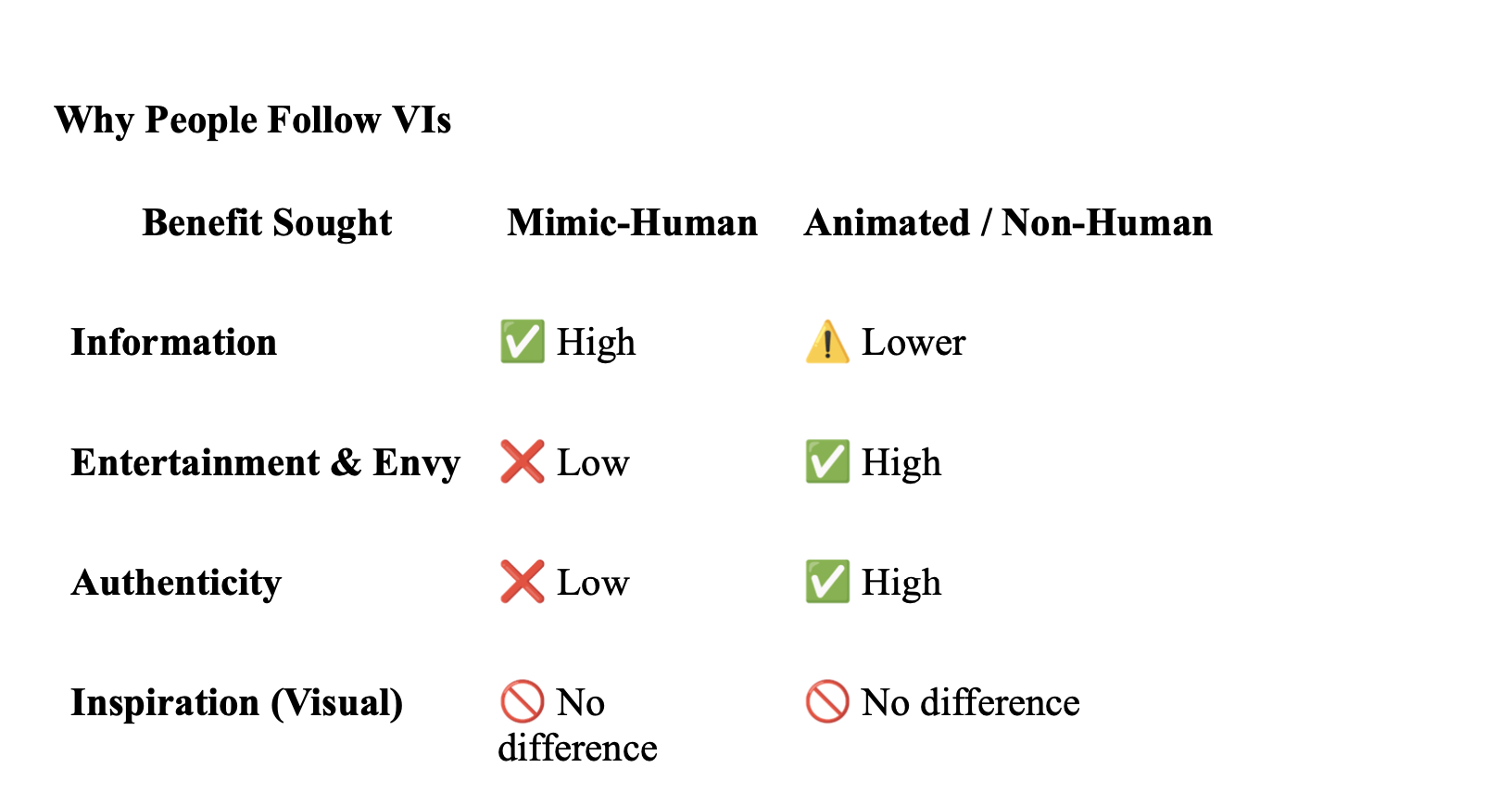The Rise of Virtual Influencers and Why We Actually Feel Something for Them
Relevant topics Archive, Strategy
A few weeks ago, I stumbled across a bee on Instagram. Not just any bee — @Bee_nfluencer —a quirky, non-human virtual influencer buzzing about environmental change. I laughed, I clicked, I followed. I didn’t expect to feel anything, but oddly enough, I did.
That moment made me pause. Why did I connect with a cartoon bee?
It turns out, there’s a psychological reason for this — and a powerful one at that.
The Brain Science Behind Virtual Connection: Social Presence Theory
The answer lies in Social Presence Theory, a neuromarketing principle that says:
The more we feel like we’re “with” someone — even digitally — the stronger our emotional response.
Whether it's a person, an animated avatar, or a talking cupcake, what matters most is the perceived presence — not the realism. Our brains respond emotionally when we sense warmth, authenticity, or relatability, even if we know the influencer isn’t human. But here’s where it gets fascinating: sometimes, the more human a virtual influencer looks, the harder it is for us to connect. Why? Welcome to the uncanny valley.
When Real Gets Too Real
If you’ve ever seen a robot or CGI character that looked almost human — but made you feel uncomfortable — you’ve experienced the uncanny valley. Our brains get confused when something is close to human but not quite right. It’s unsettling.
That’s exactly what happens with mimic-human VIs like @Imma or @LilMiquela. Despite their flawless aesthetics, they can feel… off. And that disconnect reduces emotional engagement. In contrast, animated-human VIs like @LivintheFuture or non-human VIs like @Bee_nfluencer feel playful, approachable, and safe. They don’t pretend to be real, so we let our guard down and connect emotionally.
Meet the 3 Types of Virtual Influencers
According to a 2024 study in the Journal of Business Research, VIs can be grouped into three
categories:
1. Mimic-Human – hyper-realistic digital humans (e.g., @LilMiquela)
2. Animated-Human – stylized, cartoon-like avatars (e.g., @LivintheFuture)
3. Non-Human – animals, objects, or imaginative characters (e.g., @Bee_nfluencer)
The researchers set out to measure which types foster the strongest emotional bonds — and why.
What the Research Revealed
1. Emotional Attachment: Animated-human and non-human VIs fostered the strongest emotional connections, while mimic-human VIs ranked lowest due to their unsettling realism and the cognitive load they impose on users.
2. The Role of Social Presence: Users reported feeling closer to animated and non-human VIs, whereas mimic-human VIs often felt distant and occasionally unsettling, making emotional connection more challenging.
3. Motivations for Following VIs: Different types of VIs attract followers for various reasons:
- Information: High for mimic-human VIs, lower for animated/non-human VIs.
- Entertainment & Envy: Low for mimic-human VIs, high for animated/non-human VIs.
- Authenticity: Low for mimic-human VIs, high for animated/non-human VIs.
- Aesthetic Inspiration: No significant difference across types.

Real-World Examples (That Might Surprise You)
- @LilMiquela may have millions of followers, but many users find her unsettling — too perfect, too curated, and not quite real enough to trust emotionally.
- @Bee_nfluencer, on the other hand, is clearly not trying to pass as human. She's a bee. And yet she delivers powerful environmental messages with personality and charm — and people respond.
- @LivintheFuture is a stylized avatar who sparks imagination. She’s not here to fool you. She’s here to connect — and it works.
What This Means for Marketers
This study is a goldmine for brands navigating the digital future. Here's how to apply it:
1.Choose the right VI for the job:
- Mimic-human VIs are great for tech-forward, luxury, and informational content.
- Animated or non-human VIs are ideal for emotional connection, entertainment, or brand storytelling.
2. Don’t obsess over realism: Realism doesn’t always build trust. Instead, focus on relatability and emotional tone.
3. Design for presence, not perfection: Make your VIs interactive, responsive, and fun to engage with. It’s the sense of being there that sticks.
A Few Limitations to Keep in Mind
- The study used static screenshots, not dynamic or interactive content.
- Participants knew the influencers weren’t real — which may differ from real-world browsing.
- The data focused on Western audiences, so cultural responses may vary globally.
Connection isn’t about pixels. It’s about presence.
Remember, you don’t need your virtual influencers to be real — you just need them to feel real enough to care. And sometimes, a buzzing bee with a message can connect more deeply than a flawless digital face ever could.
Further Reading
-
The Definitive Guide to Scent Marketing
Smell. Isn’t it amazing how a dash of invisible scent molecules is able to transport you right back into a childhood visit to your grandparents? Or how the delicious aroma of freshly baked bread seems to lure you into that little bakery around the corner – despite your strict low-carb diet? And everyone recognizes that typical smell emanating from the box of your brand-new phone or television.
-
5 Neuromarketing techniques every marketeer should know about
In modern day neuroscience, it’s easy to get confused over all the different neuromarketing techniques out there. While virtually all of the techniques used in the field can be valuable to marketing, it’s good to understand the difference between them and how they work.
In this article, we’ll have a closer look at five regularly used neuromarketing techniques to see how they work and in what kind of context it’s most suited: eye tracking, brain imaging (EEG and fMRI), facial encoding, sensory marketing and psychological techniques.


